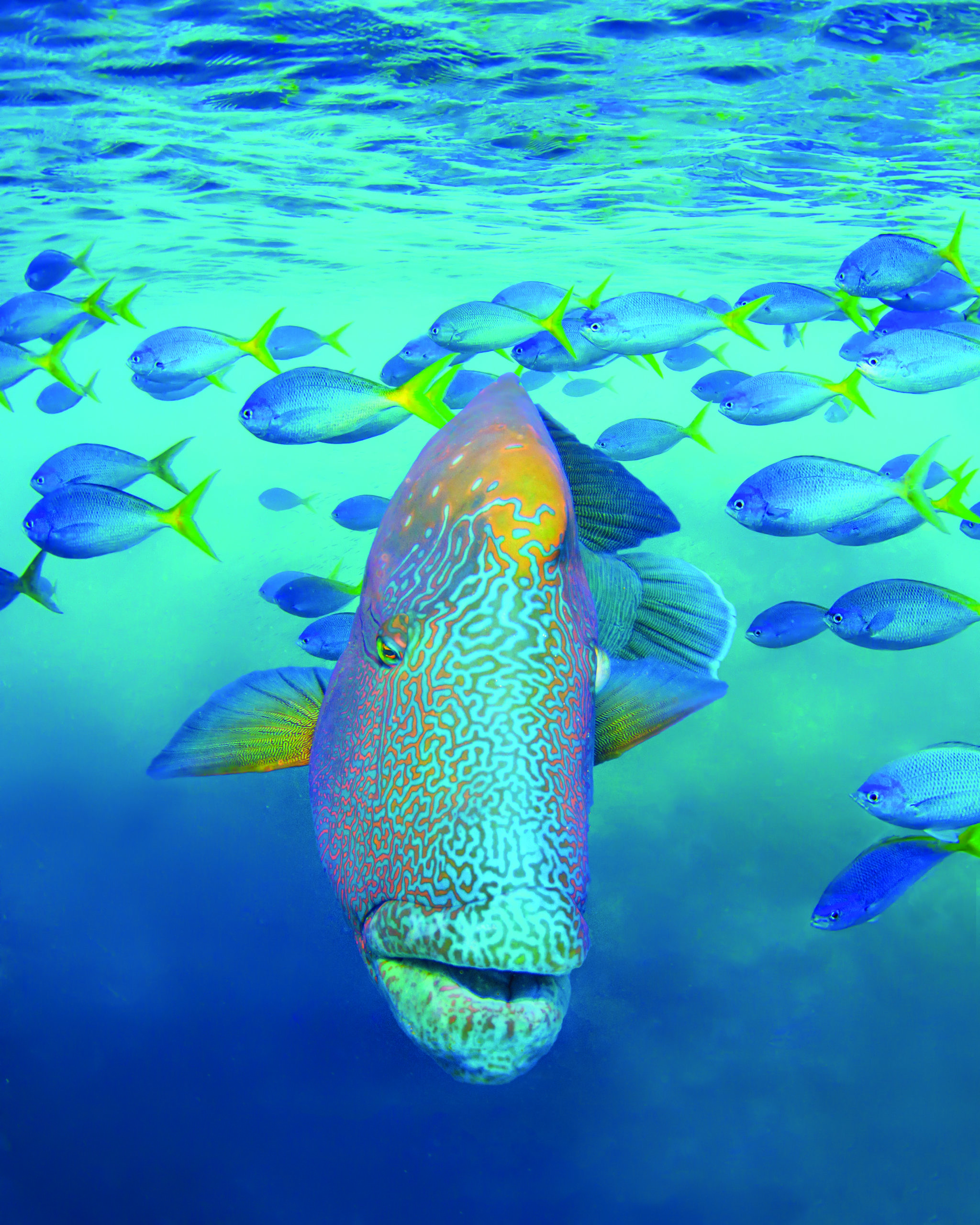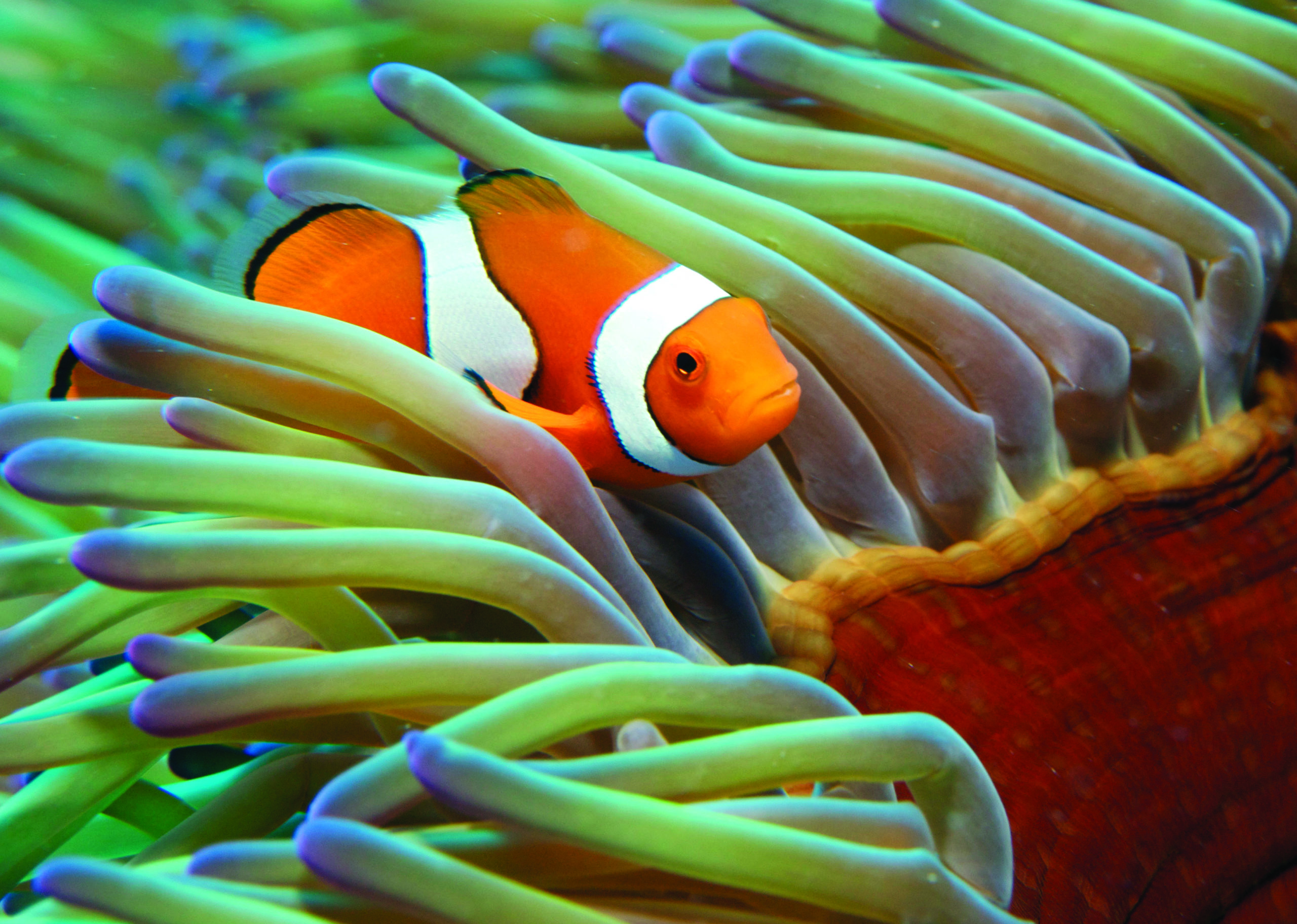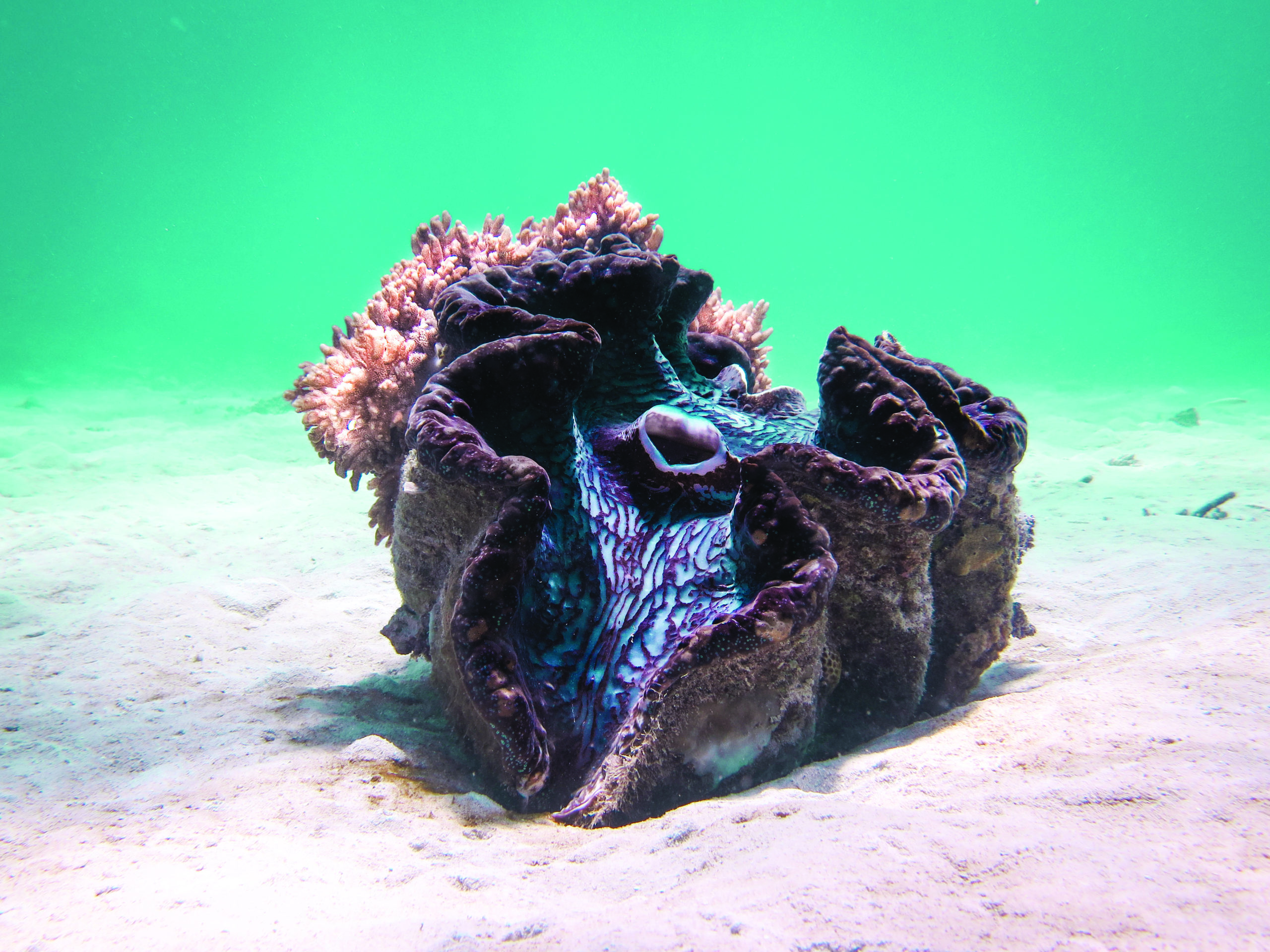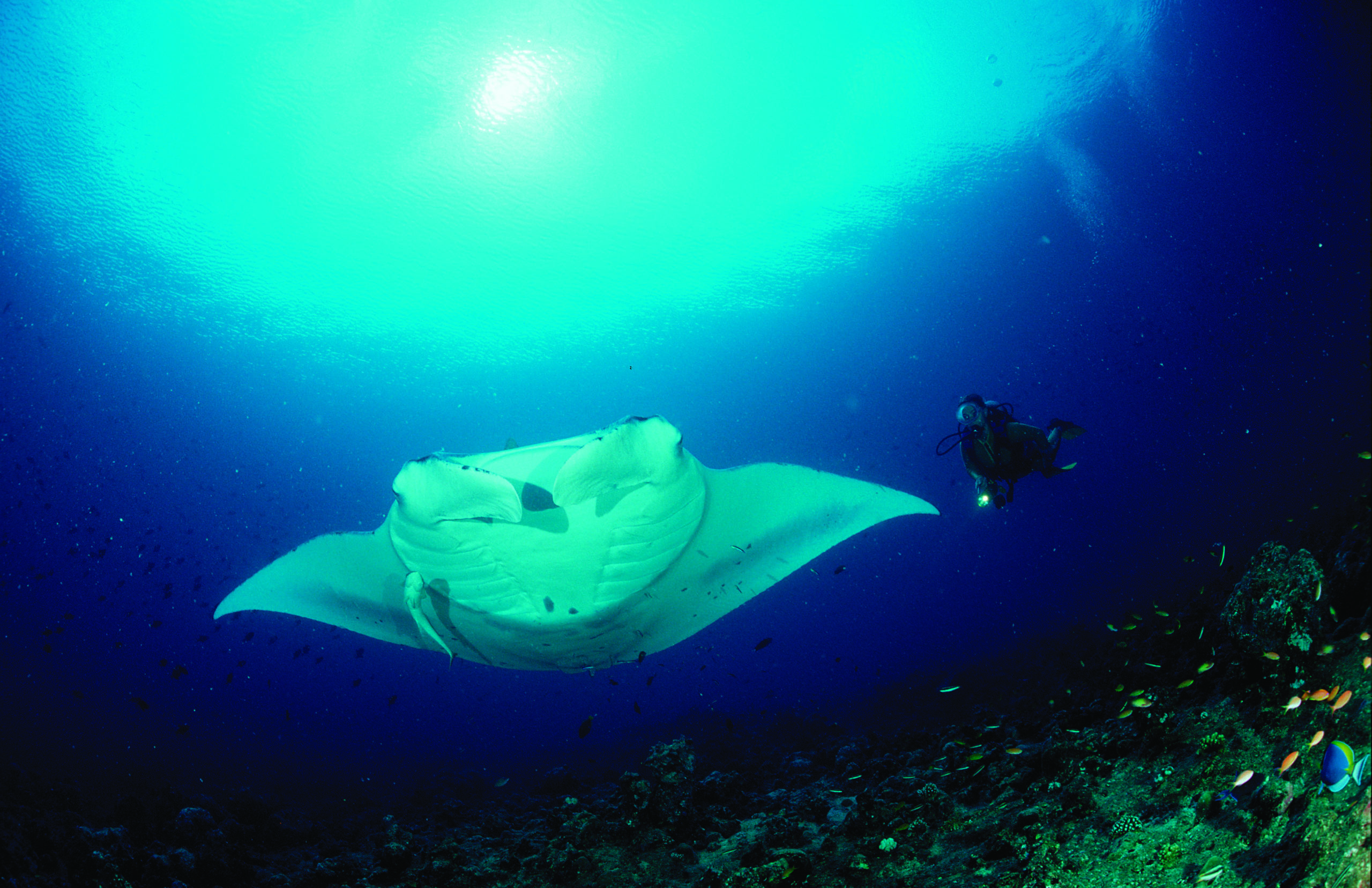

An African safari might be all about ticking off the Big Five, but in Queensland you can take an aquatic tour to spot what’s been dubbed ‘the Great Eight’.
This thrilling shortlist of impressive marine creatures includes Māori wrasse, potato cod, turtles, clownfish, whales, giant clams, manta rays, and sharks. While it might sound like only scuba divers could possibly tick off this octet, the good news is that you don’t need to complete a PADI diving course before heading out to find the animal wonders of the World Heritage listed Great Barrier Reef, the planet’s largest living structure, which unfurls along the Queensland coast from the tip of Cape York all the way to Bundaberg.
Let’s meet the aquatic stars of this list. Firstly, there’s the Māori wrasse, sometimes known as a humphead wrasse thanks to the prominent bump on its forehead. It also has thick, fleshy lips and can grow up to two metres or more in length. While it might not be the reef ’s most beautiful creature, it’s certainly one of the friendliest – these inquisitive fish often swim right up to divers and snorkellers and follow them around. Think of them as the big friendly puppies of the Great Barrier Reef.
With wrasse the second-most common fish species on the Great Barrier Reef, and Māori wrasse a protected species within the marine park, there’s a high chance of coming eyeball to eyeball with these magnificent creatures at Reefworld, a multi-level pontoon permanently moored 39 nautical miles offshore at Hardy Reef.

Located in the outer reef beyond the Whitsunday Islands, it can be reached via a scenic boat ride departing from Airlie Beach, which takes about three hours, or from Hamilton Island or Daydream Island. You’ll be able to plunge in for guided diving and snorkelling trips, visiting sites that throng with marine life, such as Bait Reef.
Another super-friendly, curious big fish is the potato cod, which can also reach two metres in length. Many divers who have paused to peer into an underwater cave or cranny have smiled to themselves when a potato cod cruised up alongside them to peek in as well. Cod Hole at Ribbon Reefs near Lizard Island is one of the favourite hangouts of these spotted fish.
The Great Barrier Reef, a medley of Pantone blues and greens dotted with a constellation of islands and coral reefs, is also favoured by turtles, with six of the world’s seven marine turtle species cruising through its glittering waters. Green, hawksbill and loggerhead turtles are the most commonly sighted sea turtles of the reef. Stay overnight in one of Reefworld’s two underwater Reefsuites and you might even wake up to the sight of a turtle swimming past your floor-to-ceiling window in the morning.

Those who are overnighting on the reef through the on-deck, under-the-stars Reefsleep experience can also see turtles while staying dry. The two-day experience includes entry to Reefworld’s underwater observatory and a guided tour in the semi-submarine.
“You might even wake up to the sight of a turtle swimming past your floor-to-ceiling window in the morning.”
Otherwise, squeeze in a morning snorkel before any day trippers arrive from the mainland or nearby islands. You might also be tempted to try scuba diving for the first time (fully certified PADI instructors are on hand to guide you through an introductory dive). Those who peek under the surface will see the results of Reefworld’s recent project to transplant 4,000 pieces of coral from old moorings into the reef wall – the largest natural coral transplant ever undertaken on the Great Barrier Reef.
Clownfish are just one of 1,625 fish species that call the Great Barrier Reef home but, thanks to a certain Disney movie, many visitors are keen to tick off the fish they know as “Nemo”. That isn’t difficult. As these small orange, white, and black striped fish have a symbiotic protective relationship with sea anemones – up to 40 clownfish might call a single sea anemone home – they can be spotted throughout the reef. Just keep your eyes peeled for that tell-tale flash of orange.
At the other end of the scale are whales. Australia’s eastern seaboard is nicknamed the Humpback Highway, as this is the route whales take while shuttling between their feeding and breeding grounds. In Tropical North Queensland, you can spot migrating humpbacks performing their aerial acrobatics between July and September. June and July are the months when dwarf minke whales hang out at Ribbon Reefs near Lizard Island, creating the world’s only regular aggregation of these creatures, each of which boasts a complex colour pattern.

Another creature with an identifying colour pattern is the giant clam. These bivalve molluscs, which can grow to 1.5 metres long and weigh up to 200 kilograms, making them the world’s largest, have a somewhat drab exterior but an eye-catching technicolour mantle (the membrane protruding from the shell). Like human fingerprints, no two clams have the same mantle pattern or colours. The stunning molluscs have an average lifespan of around a century.

The reef is also home to many types of rays, such as the pretty blue-spotted rays that can be seen near Whitsunday Island, but the one that makes the Great Eight list is the elegant manta ray. With wings spanning up to seven metres, it’s mesmerising to watch these extraordinary creatures pirouetting through the water as they feed on plankton.
“With wings spanning up to seven metres, it’s mesmerising to watch these extraordinary creatures pirouetting through the water.”
Finally, to round out the list, we come to one of the ocean’s most awe-inspiring creatures. There are more than 400 shark species in the world – and more than 100 of them are found along the Queensland coast. With such diversity, it’s possible to see a variety of sharks, from plankton-guzzling whale sharks – the world’s largest fish – to diving and snorkelling alongside whitetip and blacktip reef sharks, which are generally harmless to humans. Among Queensland’s smaller resident sharks is the leopard shark, named for the distinctive spots that help disguise it when it’s lying on the sun-dappled ocean floor.

Meet the Great Barrier Reef’s Great Eight through one of Cruise Whitsundays’ unique experiences. Click here to find out more.
Sign up to receive our e-newsletters featuring the latest news, exclusive offers and much more from Cruise Whitsundays and Journey Beyond.